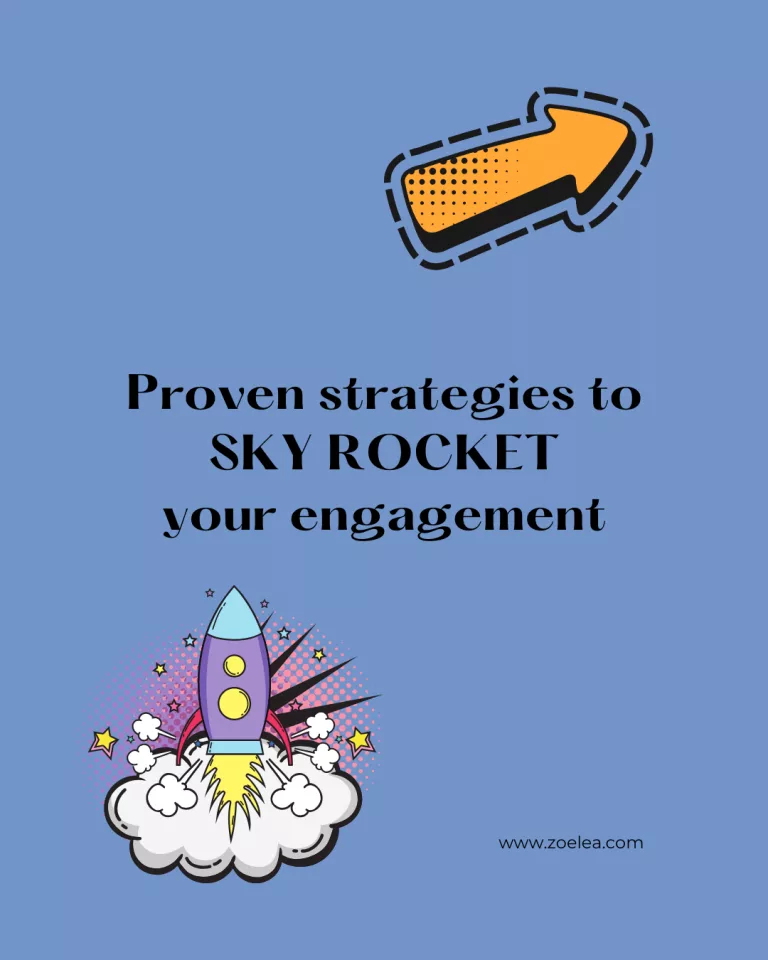3 Simple Ways to Add Emotion in Your Social Media Copywriting
Table of Contents
Social Media Copywriting with FEELING!
Cutting through all the noise on social media these days is HARD!
Just think about your time on social media – the scroll is never-ending with a multitude of images and videos all trying to get your attention.
But there’s a secret weapon you can wield to make your message stick: emotion.
Because when you tap into the feelings of your audience, it can transform content into a powerful connection.
People make decisions based on their emotions, not logic, otherwise there would be no luxury brands, no aesthetic themes, no anything other than the functional.
Adding emotion into your social media copywriting can enhance engagement and build bonds with your audience and here are 4 really easy ways to do just that.
But before we go ahead, a word of warning – using emotion in your copywriting should never be done in a manipulative or controlling way. Use it to highlight and enhance your message, but never to exploit it.

Understanding the Power of Emotion in Copywriting
Emotion in social media copywriting isn’t just about tugging on heartstrings or posting up a picture of a kitten to grab attention by cuteness overload. Done correctly, it’s a strategic way to drive and make an impactful connection that your community will remember.
When your words evoke feelings, you’re not just communicating; you’re building relationships.
Emotion captures attention, maintains interest, and encourages action—whether it’s a click, a share, or a comment and it’s your secret weapon into cutting through the noise and stopping the scroll.
The Psychology Behind Emotional Engagement
Emotional messaging is all about psychology.
Emotional triggers like joy, fear, or nostalgia can activate parts of the brain responsible for decision-making and memory.
These feelings create a sense of connection and urgency, prompting your community to act. When your copy taps into these psychological drivers, you don’t just communicate—you relate.

Types of Emotions to Evoke
Different emotions can serve different purposes in your social media strategy. This is not an exhaustive list, obviously, as there are a myriad of different emotions and the ones you want to focus on will be different depending on your business and your messaging, but here are a few biggies to consider.
Joy: The best types of posts and content! Creating a sense of happiness or excitement to encourage sharing and positive interaction. If you’ve ever shared an inspiring or humours meme, a beautiful image or video that tells a story of happiness and joy, you’ll understand why this type of post is contagious.
Nostalgia: A brilliant way to tug on the heartstrings of the past and bring up those fond memories and a sense of comfort. Telling a story from childhood or times past is a powerful way to relate.
Fear: We’ve all had FOMO and used the right way, and with integrity and moral guidance, fear is a very powerful emotion to use in your content. But be careful. Always remember, a real person is the target of your content, and anything you create must be with a clear and responsible sense of purpose. Clickbait for no other reason than that trying to scare your audience into seeing your content will not work in the long-term.
Surprise: Catch your audience off guard to capture their attention. This can be as a great hook, a funny image, or a curious situation that keeps them watching – anything that surprises them will intrigue interest.

1. Using Storytelling to Connect Emotionally
The magic of storytelling lies in its ability to make the abstract relatable.
By weaving narratives into your social media copy, you engage not just the intellect but the heart and soul of your community.
Crafting Relatable Narratives
Think about the times you’ve been drawn into a story that reflected your own experiences. Sharing personal anecdotes or crafting scenarios your audience can see themselves in makes your message relatable. And shareable.
Shareable content is the best kind of content, and it increases reach, engagement and your audience.
By inviting your audience into a story, you are forging connections that go beyond the surface of your content. Consider what resonates with your audience’s daily lives and incorporate those elements into your storytelling and talk about it in your captions.

Utilising User-Generated Content – Show don’t tell!
Real stories, from real people, carry a powerful emotional punch.
User-generated content (UGC) offers genuine insights and experiences that captivate audiences. This is why testimonials and reviews work so well. They tell the story from a different perspective.
So, whenever possible, be sure to collect stories and anecdotes from your community. A story about someone who is using your product or service to solve a problem, is so much more powerful than you telling someone how your product or service works.
In essence, you’re showing your audience the benefits of what you offer, rather than simply telling them.
2. Incorporating Visuals to Amplify Emotion
When people think of storytelling in content, they immediately assume words.
But don’t forget images! Ever heard the saying ‘a picture paints a thousand words?’ This is why your imagery is so important.

Choosing Powerful Imagery
The image only works if it naturally complements and enhances your message.
A joyful, vibrant photo can amplify a positive message, while darker, more poignant images can underscore urgency or seriousness. Remember, a picture not only speaks a thousand words but evokes countless emotions, choose carefully. Put this with some powerful social media copywriting in your caption and you have a really significant piece of content!
The Role of Videos in Emotional Connection
Video is everywhere right now, Reels on Instagram and TikTok as well as YouTube and it can be more immersive than text alone.
Videos capture emotion through facial expressions, tone of voice, and pacing. They allow you to tell a story in a way that can result in a more profound emotional response.
3. Crafting Emotionally Charged Calls to Action
A call to action (CTA) is your opportunity to prompt action while maintaining the emotional connection you’ve built.

Using Empathy in Your Messaging
Show your audience that you understand their needs and feelings by creating a compelling signpost of where to go next. Your CTA is simply telling the person what you would like them to do after reading your social media content. This is something that’s so often missed on posts, so make sure you include it and make sure it packs a punch!
Creating Urgency and FOMO
Use this carefully to motivate rather than overwhelm! Creating urgency (only two days left to sign up!) is an effective tool that triggers Fear of Missing Out (FOMO), but please, don’t overuse this technique and make sure it’s true. Don’t say there’s only two days left to sign up, if there is in fact, twenty!
What’s Next?
Weaving emotion into your social media copywriting is more than an art; it’s a potent strategy for creating connections and driving actions.
By understanding and harnessing emotions, your social media copywriting will resonate more deeply, boosting engagement and building lasting relationships.
Emotions are the touchpoints of human experience, and integrating them into your social media efforts ensures your voice is heard—and remembered.
If you find this kind of thing difficult and would like some help to add emotion into your captions, let me know and I can write a specific amount of social media captions to your business to ensure your message cuts through the noise! Packages start at 10 captions. Get in touch to see how I can help.
Please pin one image below to your favourite writing board!








